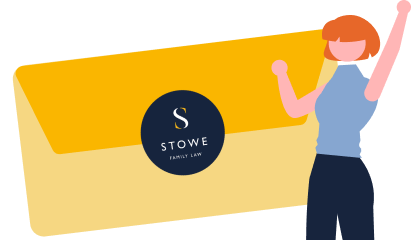What is tech abuse?
Tech abuse, also known as digital abuse and technology assisted abuse, is a form of domestic abuse whereby digital technology and devices are deliberately used to control, coerce, threaten, or harm another person.
There is no definitive definition of tech abuse. Instead, it broadly includes any type of harmful or damaging behaviour carried via digital devices, networks, or services.
Perpetrators of tech abuse can be a partner, ex-partner, family member, friend, colleague, or someone unknown to you.
Tech abuse typically incorporates other forms of abuse, such as physical violence, economic abuse, coercive control, and sexual abuse.
Tech abuse and the domestic abuse bill 2019-21
The Domestic Abuse Bill 2019-21, given royal ascent in April 2021, redefined domestic abuse and set out extra protections for witnesses and survivors. While the bill does not explicitly refer to ‘tech abuse’ it is designed to encompass the behaviours, rather than the tools and resources, used to inflict abuse.
The government definition of domestic violence and abuse is:
‘Any incident or pattern of incidents of controlling, coercive or threatening behaviour, violence or abuse between those aged 16 or over who are or have been intimate partners or family members regardless of gender or sexuality. This can encompass, but is not limited to, the following types of abuse:
- psychological
- physical
- sexual
- financial
- emotional
‘Controlling behaviour is: a range of acts designed to make a person subordinate and/or dependent by isolating them from sources of support, exploiting their resources and capacities for personal gain, depriving them of the means needed for independence, resistance and escape and regulating their everyday behaviour.
Coercive behaviour is: an act or a pattern of acts of assault, threats, humiliation and intimidation or other abuse that is used to harm, punish, or frighten their victim.’
How can technology be misused or abused?
We all use home and personal devices daily, such as smartphones, laptops, tablets, home assistants (i.e. Alexa), smart watches, fitness trackers, and internet-connected home security systems.
These ‘smart’ technologies, along with the apps, accounts, profiles, networks, and services they connect to, each have the potential to be used by tech abusers.
Perpetrators of domestic abuse intentionally misuse technology to harm or exert control over their survivors in several ways including exclusion, harassment, stalking, intimidating, and degrading.
Abusers may secretly or forcibly gain access to their partner’s devices without consent, before using this access to monitor and abuse. They may exploit tracking features, install spyware or other software that allows them to covertly monitor and gather information, gaining remote access to messages, call history, photographs, and location trackers and more.
The potential to be anonymous or to impersonate someone else online also has benefits for tech abusers. Although some will utilise covert methods of abuse, others will be less concerned about concealing their identity.
What do they do with this information?
Abusers use technology as a means to an end; the aim is to do harm, and technology is simply the tool they use to inflict it. Tech abuse is real and has as profound an impact on survivors as other forms of abuse.
Examples of tech abuse in relationships
Social Media
Social media is a common method of tech abuse. Abusers can create false profiles, concealing their own identity while posing as you or someone else. While hacking someone’s social media profile is a crime, impersonating someone else is not.
They may comment on or share posts while impersonating you. Or they may directly contact you, your friends and family, organisations that you are connected with, to harass or share degrading or damaging information or lies.
Another common form of abuse carried out on social media is ‘tagging’, when someone tags you in an image or a post, so that your social media profile becomes associated, often without you knowing about it.
Social media can also be used for cyberstalking or gathering details of your whereabouts or relationships with others based on the content that you, or others, share.
Done with malice, abusers can deliberately target individuals to mis-represent, harass and exploit them.
Surveillance
Needing to know their survivor’s every move is a common trait of many abusers. Technology gives them a range of tools to monitor with tracking equipment, such as home security tech, apps, virtual home assistants and Airtags. Some will keep their surveillance hidden from you, while others will be more open about knowing where you are and who you’re with.
Virtual Assistants
Virtual or home assistants, such as Alexa and Google Home, can be used to monitor you and gain access to linked 3rd party apps and accounts. They can be used to gain easy access to contacts and calendars, to send messages, uncover order information, make purchases, and reveal internet searches.
What’s more, they can also be used as intercoms, listening, and audio and video recording devices.
Sexting and revenge porn
Sharing intimate or sexual images and videos with malicious intent is an increasingly common form of tech abuse. There are two common forms:
-
-
- Sext re-posting: sending, receiving, or forwarding sexually explicit messages, photographs, or videos of another person without consent.
- Revenge porn: sharing private sexual materials online or offline without consent for the purpose of causing harm or distress.
-
Tech abusers use sext re-posting or revenge porn to demean or degrade others. They may upload images of you to the internet so that they’re publicly accessible, or share directly with friends, family or colleagues via messages, emails, or showing them a physical or digital image.
Support for survivors of tech abuse
Abusers don’t need to be tech-savvy or proficient with IT to use digital devices, networks, or services to inflict harm. Everyday affordable and readily available technology provides sufficient tools for those with malicious intent. As new technology emerges and improves at pace, abusers will benefit from an ever wider and more sophisticated range of tools to inflict harm with.
What remains constant is the lasting impact on survivors’ lives, often with far-reaching personal consequences.
Guidance from Refuge advises to trust your instincts if something doesn’t feel right and seek help.
We’ve gathered a list of resources providing sound advice for anyone suffering due to tech abuse, with practical steps to improve online safety and secure your tech.
Useful Links
Refuge’s tech safety website shares a wealth of information and resources including Digital Breakup a tool for testing the security of your apps and devices, a Home Tour highlighting tech that’s commonly mis-used in our homes along with advice on to how to secure them, and a useful glossary.
Or you can call Refuge Freephone 24-Hour National Domestic Abuse Helpline: 0808 2000 247
Suzy Lamplugh Trustis a personal safety charity with a national stalking helpline 0808 802 0300
Gov.uk’s advice on how to report a stalker
Join our free webinar on Wednesday 1st March 2023 – Stowe Talks – Tech Abuse: what it is and how do you stop it?


